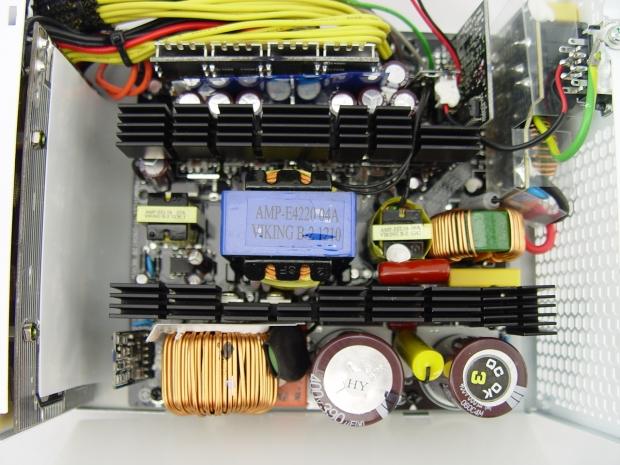Power supply

A computer power supply is a device that converts the alternating voltage supplied from the electricity network into a DC voltage used by the computer.
Power supplies, as well as motherboards have different standards, however, currently only ATX standard is commonly used in computers.
How power supply actually works
The computer power supply is a switched power supply. It works on the principle of:
"control of the average voltage delivered to the load, by switching the transistors between saturation and clogging, using variable length control pulses (pulse width modulation) The rectangular voltage waveform created in this way goes to the primary winding of the transformer. Voltage from the secondary winding of the transformer goes to The voltage ripple is smoothed by the chokes and capacitors The power supply can supply several different output voltages if several secondary windings are used in the transformer. "

Selection of the power supply
One of the most important things when buying a power supply, which should be noticed by someone who does not know about computer hardware, is an 80plus certificate, which has several categories, and built-in security that protects the computer against damage.

Built-in security
- OVP (Over Voltage Protection) - Protection against too high output voltage. Activates when the voltage is 15% higher than the default.
- UVP (Under Voltage Protection) - Protection against too low voltage on the output lines. The low voltage affects, above all, the stability of the computer.
- OCP (Over Current Protection) - Overcurrent protection of the stabilizer with too high current. The power supply with this protection can switch itself off in the event of danger of overloading one of its lines.
- OLP or OPP (Over Load Protection or Over Power Protection) - Same as above, it is overload protection, but works on the entire battery, not on individual lines.
- OTP (Over Temperature Protection) - Prevents the UPS from overheating, which can cause poor air circulation.
- SCP (Short Circuit Protection) - Short-circuit protection. Activates when a short circuit appears in the power supply circuit.
- IOVP (Input Over Voltage Protection) - Protects the power supply against too high input voltage
- IUVP (Input Under Voltage Protection) - Prevents the UPS from too low input voltage
In order for the power supply to be well suited to your computer, you need to sum up the required power of your computer's components.
You can try it yourself, or you can use the outervision.com website where a calculator is prepared especially for this task.
Notable companies
There are a lot of companies producing power supplies on the market, but only a few are guaranteed to be guaranteed, such as: Antec, Corsair, Thermaltake, Chieftec, XFX, BeQuiet, OCZ, CoolerMaster, EVGA, Seasonic, Silverstone, Enermax
Modularity
It is worth mentioning that some power supplies have implemented modularity. What allows you to use only those cables that are needed, so you can avoid clutter in the computer casing.

CuR!05iTY
While a good home use power supply can be up to 750W, the power supplies used in server rooms can reach up to 1700W!

